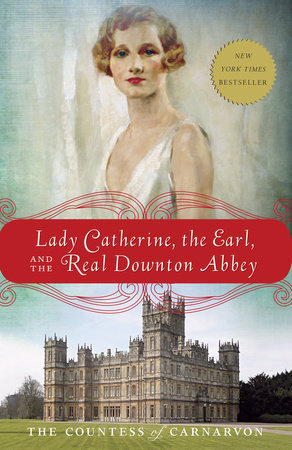Lady Catherine, the Earl, and the Real Downton Abbey Reader’s Guide
By The Countess of Carnarvon


1. How does Lady Catherine’s world compare to the societies depicted in Lady Almina and the Real Downton Abbey? Who had the greater freedom—wealthy Almina or modern Catherine? What can both women teach us about resilience?
2. Downton Abbey’s characters cope with romantic rivalries and economic crises, just as Porchey and Catherine did. In what other ways does the PBS show echo the book? In what ways was life at Highclere Castle even more dramatic than at Downton Abbey?
3. How did Lady Catherine, the Earl, and the Real Downton Abbey enhance your understanding of the British experience during World War II? What historical details surprised you the most?
4. The author artfully weaves Henry’s frontline experience with Robert Taylor’s. How did World War II transform Britain’s social divisions? Who in your family was part of the Greatest Generation?
5. Catherine’s widowed mother decided to move her family to London, but Porchey’s new bride, Tilly, ensconced herself in the States. How did transatlantic connections shape the culture of the early twentieth century? How were the American and British identities perceived on both sides of the Atlantic?
6. In chapter fourteen, we learn about George, the valet and acting butler who was dismissed after shirking his duties and trying to have a taste of his lord’s lavish lifestyle. Compare him to Robert Taylor, whose lifelong career outside the military was to be a devoted servant at Highclere. If you had lived during that time period, which role would you have been more likely to take?
7. What did Porchey and Catherine ultimately seek in their other spouses? Why was Catherine able to find a match with a stable man who cherished her, while Porchey pursued women who could not commit to him?
8. Just as Lady Almina transformed Highclere Castle into a hospital for wounded officers during World War I, Porchey and Tilly saw the estate transformed into a shelter for children and, later, for soldiers’ quarters. Does this spirit of hands-on generosity exist among today’s upper classes?
9. Like Downton Abbey’s Robert Crawley, Catherine’s father lost his fortune by staking the family’s future in a single stock. On the other hand, Porchey’s investment in Pyrotenax helped secure his future. What do these decisions tell us about the balance of luck and wisdom in building—and keeping—wealth?
10. The book begins with depictions of an opulent life for Catherine and her children. It shifts to a life of service as each member of the family begins supporting the war effort. Despite the trauma of war, how was the family enhanced by the immersion in working-class duties?
11. The author reminds us that Catherine’s divorce stipulation secured Highclere Castle for her son, and for future earls of Carnarvon. In doing so, what did she preserve besides architecture and a place of shelter? What are the intangible benefits of maintaining the castle and its owner’s noble title?
12. What do you predict for the future of Britain’s aristocracy and the new generation of royals? Will their network be as powerful as Porchey’s friendships with future kings and queens?
Guide written by Amy Clements
Just for joining you’ll get personalized recommendations on your dashboard daily and features only for members.
Find Out More Join Now Sign In